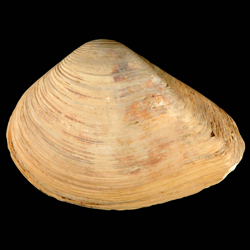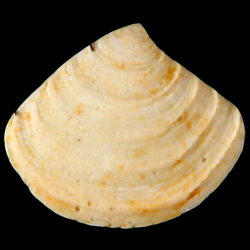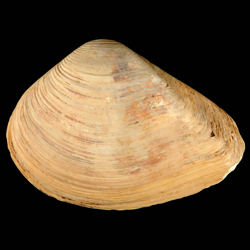
Crassatellidae

- Phylum: Mollusca
- Class: Bivalvia
- Order: Carditida
- Family: Crassatellidae
Overview
Common name: Crassatella clams
Key morphological features: The Crassatellidae range in size up to ~115mm. The shells are equivalve or inequivalve (left valve larger than the right), depending on the species. They are compressed and range in outline shape from quadrangular to trigonal, typically with a rounded anterior side and more rostrate posterior side. The shell exterior is smooth or exhibits relatively fine commarginal ribs, and are composed of aragonite. Valve interiors have a simple, uninterrupted pallial line and interior shell margins are smooth. Species of Crassatellidae are isomyarian, and the heterodont hinge is set on a triangular hinge plate including an anterior resilifer, two or three large cardinal teeth per valve (often exhibiting serrations) and laminar lateral teeth on either side. Source: Mikkelsen, P.M., and Bieler, R. 2008. Seashells of Southern Florida: Bivalves. Princeton, New Jersey: Princeton University Press. 503 pp.
Geological range: Devonian to Recent (Mikkelsen & Bieler, 2008).
Geographic distribution: A distributional map for modern Crassatellidae may be accessed from OBIS. A distributional map for ancient Crassatellidae may be accessed from the Paleobiology Database.
Diversity: There are 84 recognized living species of Crassatellidae and 16 genera (WoRMS database, unvetted). The Paleobiology Database recognizes 25 fossil genera and 425 fossil species of Crassatellidae (unvetted).
Paleoecology: The Crassatellidae are mobile, marine, filter-feeding bivalves, including species that live shallowly buried as well as species that live byssally attached to rubble. Extant Crassatellidae inhabit tropical and subtropical shallow marine environments worldwide. Source: Mikkelsen and Bieler (2008).
Phylogenetic status: Monophyletic. The recent molecular phylogenetic analysis by González and Giribet (2015) supports the monophyly of Family Crassatellidae.

